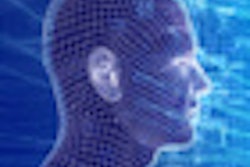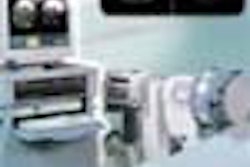SAN ANTONIO - Diagnostic radiology workstations have come a long way from the early days of PACS. But further progress can still be made, according to Dr. Steven Horii, associate director of the medical informatics group at the University of Pennsylvania Medical Center in Philadelphia.
Horii spoke Thursday during "PACS 2002: Implementing CR/DR and Integrating the Healthcare Enterprise," a conference sponsored by the University of Rochester department of radiology.
Basic diagnostic workstation functions today include:
- Image navigation
- Image comparison and correlation
- Image manipulation
- Image analysis
- Image annotation
Today's image navigation capabilities will likely evolve away from the "patient folder" or "film jacket" concept commonly employed at present in diagnostic workstations, Horii said. Instead, a next generation of workstations will offer image navigation through a soft-copy-centric model, rather than seeking to emulate film-based workflow.
Currently, comparison and correlation features allow for access to current examinations and previous studies of the same type, as well as different examination types, Horii said. Image manipulation features include: basic window width and level adjustment, zoom and pan, "magnifying glass," and grayscale inversion. Less-used manipulation functionality includes: image processing, image flip/rotate, and image arithmetic (subtraction), Horii said.
Image-analysis functionality includes region of interest (ROI) pixel statistics (attenuation measurement), as well as distance, angular, and area measurements, he said. Image annotation allows the radiologist to identify the findings that lead to the diagnosis.
User complaints
Common user problems with diagnostic radiology workstations include brightness, spatial resolution, and speed shortcomings compared with film and lightboxes, he said. Some users also complain that workstations are difficult to use and are too expensive.
Other issues, although less frequently noted, include poor integration with other information systems and a lack of adaptation and automation, he said. In addition, the use of workstations for long reading sessions is often difficult, and may result in more fatigue or a workflow change, Horii said.
Fortunately, monitor luminance has improved by four to five times over early medical CRTs, he said. Today's monitors range in luminance from 100 to 400 foot-Lamberts (compared with the average lightbox brightness range of 600 to 1000 ft-L).
Slow workstation speed is technologically solvable, Horii said. Another factor that can slow down the reading process is time spent by radiologists looking at non-image information on the workstation.
"(Research) data suggests that (radiologists) are spending time doing non-interpretive tasks at the workstation," he said.
Spatial resolution may be less than an issue than many think. Recent studies comparing spatial resolution of CRTs have concluded that diagnostic accuracy was comparable for 1K versus 2K monitors. The research also revealed that at the level of a 1K monitor and above, luminosity is more important than resolution, said Dr. Paul Chang, director of the division of radiology informatics at the University of Pittsburgh Medical Center.
"Based on the experience of (the researchers) and other experiences we've had, we don't buy 2K workstations any more," Chang said.
Flat-panel displays may also exceed the spatial resolution of CRTs. With active-matrix liquid crystal displays (AMLCDs), luminance is high, but contrast resolution remains an issue, Horii said. A panel discussion at the 2001 Computer Assisted Radiology and Surgery (CARS) meeting in Berlin concluded that flat-panel displays are expected to replace CRTs in medical applications within three to five years, Horii said.
The difficulties users report with workstations are largely the result of a lack of automation and adaptation, Horii said. Users are still forced to perform many manual tasks.
To improve the usability of workstations, Horii recommends that greater attention be placed on ergonomics and workstation environments. Workstations should also be able to take advantage of knowledge about the user, and learn from what he or she does, he said. This capability should be independent of the user's location and should be capable of being readily switched.
Workstation costs continue to decline, but it's not realistic to replace all hospital lightboxes with an expensive, diagnostic radiology workstation. Web-based approaches should be employed for wide-area or enterprise image distribution, he said.
Standards such as HL7 and DICOM are helpful in overcoming barriers to systems integration. In addition, the Integrating the Healthcare Enterprise initiative is offering a solution to this problem, he said. Horii envisions the creation of a single-point-of-contact workstation, which would initially allow physicians access to information from diverse sources, and, ultimately, provide integration of that information into a more usable form.
Analysis of the tasks and reading habits of radiologists is also critical for the development of an effective PACS workstation, Horii said.
"If a PACS replaces only the display function of film, it is likely to fail as a system," Horii said. "Understanding all of the functions, tasks, and information movement that go into radiology operations is critical for PACS implementation."
By Erik L. RidleyAuntMinnie.com staff writer
March 15, 2002
Related Reading
PACS: A Guide to the Digital Revolution, March 5, 2002
Negotiating PACS, from prenuptials to partnership, February 22, 2002
HIMSS session: PACS offers unique IT challenges, January 29, 2002
Reinvestment optimizes PACS productivity, November 21, 2001
Copyright © 2002 AuntMinnie.com


















